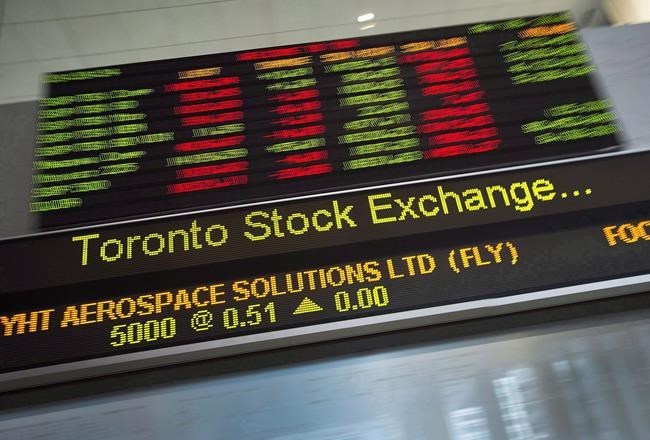TORONTO — Canada's main stock index partially recovered from last week's heavy losses as a bipartisan infrastructure deal in the United States drove crude oil prices above US$74 a barrel.
The US$1.2-trillion package over eight years includes a focus on roads and U.S. transportation infrastructure that bodes well to a continuation of the reopening theme as the number of vaccinations continue to increase, says Macan Nia, senior investment strategist at Manulife Investment Management.
"Just positive news from vaccination front and then also the infrastructure agreement out of the U.S. that is having upward pressure on the oil complex," he said in an interview.
The August crude contract was up 75 cents at US$74.05 per barrel and the August natural gas contract was up 8.3 cents at US$3.52 per mmBTU.
That helped the energy sector on typically quiet summer day with shares of Arc Resources Ltd. climbing five per cent.
Crude prices increased 3.9 per cent in the past week as supply remains constrained despite growing global demand.
OPEC and its partners will meet next week to decide if output will increase.
The S&P/TSX composite index closed up 15.14 points to 20,230.26.
In New York, the Dow Jones industrial average was up 237.02 points at 34,433.84. The S&P 500 index was up 14.21 points at 4,280.70 after hitting a record 4,286.12, while the Nasdaq composite was down 9.32 points at 14,360.39.
Markets were also impacted by the latest personal consumption expenditures (PCE) data. The Federal Reserve's preferred measure of inflation showed underlying price increases were up less than expected in May. Core PCE rose 3.4 per cent year-over-year, which is above the Fed's two per cent target and the fastest increase since the early 1990s.
"It was high, but less than what consensus was expecting and we see that (having) an impact on rates in the U.S.," said Nia.
Rising inflation has become a hot topic of debate among market watchers since it could determine how quickly interest rates will rise and when central banks will taper stimulus by pulling back bond purchases.
The Fed insists inflation increases are "transitory" or temporary, while others fear they are more enduring.
"I think it is going to be the biggest theme for the remainder of the year. That's why markets pay close attention to these inflation prints, like the one today, just to get clues where inflation is going," he said.
Nia's team believes inflation is more persistent given labour shortages, commodity prices and pent-up consumer demand.
"So when you combine all these three things together, it's very easy for us to envision an environment where inflation is north of two-and-a-half, trending towards three for the remainder of the year.
Inflationary numbers will not only determine fixed income returns but also equity performance.
Markets have increased strongly so far this year, with the TSX up 16 per cent.
Nia said some customers have asked whether it's time to sell to lock-in gains.
"We've had a great six months of the year, but we believe that there's still gains to be had on the table in this environment."
The heavyweight financials sector was the leader Friday on the TSX, gaining about a half a percentage point on rising 10-year bond yields as shares of Manulife Financial increased 1.8 per cent.
The Canadian dollar traded for 81.36 cents US compared with 81.20 cents US on Thursday.
Materials was one of the laggards even though gold prices climbed. Shares of B2 Gold Corp. lost 3.4 per cent.
The August gold contract was up US$1.10 at US$1,777.80 an ounce and the July copper contract was down 1.9 cents at US$4.29 a pound.
This report by The Canadian Press was first published June 25, 2021.
Companies in this story: (TSX:MFC, TSX:BTO, TSX:ARX, TSX:GSPTSE, TSX:CADUSD=X)
Ross Marowits, The Canadian Press



